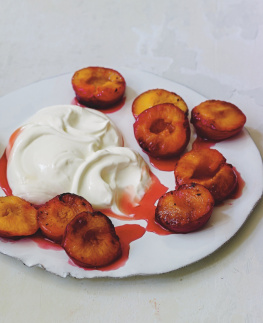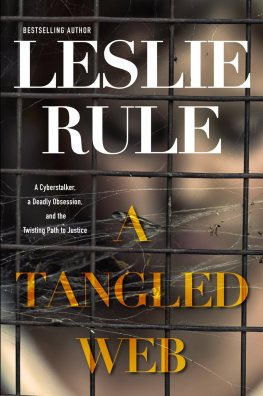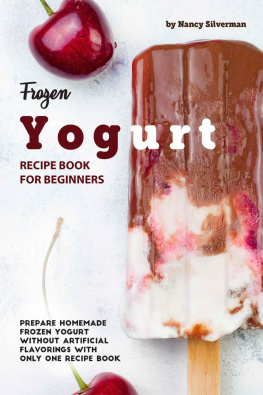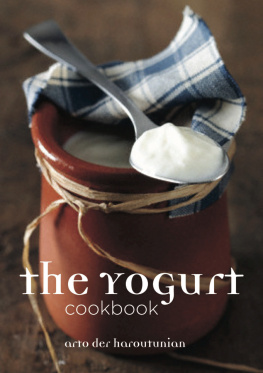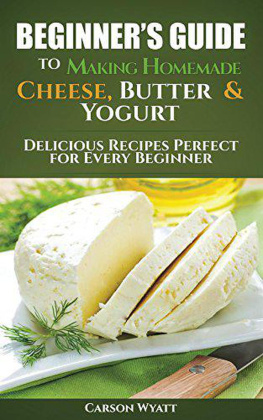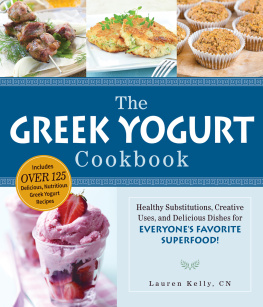Introduction
We didnt have much. We had a couch my husband, Colin, made by folding a mattress in half and tying a few logs to it with yellow nylon rope. We had a pink, cushy toilet seat my mother-in-law, in a gesture equally well-intentioned and ludicrous, shipped to us in Africa from her home in Dallas. And we had a small kerosene stove, big enough for a single pot, yet small enough to be nudged under that couch if we ever needed more legroom.
Such was our Peace Corps life in Eritrea, the tiny nation where Colin and I spent two years teaching English as newlyweds in the mid-1990s. During our initial months on-site, we experienced many firsts: our first (and last) locust swarm, our first puppy, and our first time bathing in buckets the size of a large pancake.
Over time, we began to hand-make those creature comforts we missed from home. Not just the couch, which served its purpose well until, one day, it collapsed in a spectacular heap, but the foodstuffs that reminded us of our modern American lives. Colin fashioned a reflector oven out of an old cardboard box, some foil, and a few coats of black paint. We bought a second potnothing fancy, just the one type of thin aluminum pot sold in every shop in townand he spray-painted that black, too. He made a basic yeast dough, laid it in the pot, set it in the sun, and hours laterlo and beholdwe had bread. It wasnt artisanal. It didnt have fancy Asiago cheese or a crackly crust, but it was bread, and he had made it in a pot, in a box, in the sun.
It wasnt long after that that we made our first yogurt. Yogurt, rugo in the local language, was a staple in every tea shop; served with bread and a spicy tomato sauce, it was the star ingredient in a piquant, creamy dish called . So it wasnt tough for us to procure some yogurt to use as a starter.
Our early yogurt-making efforts were disappointing; it took a few tries before we got it right. (The reflector oven concentrated the heat way too much, for starters.) But that black pot, with its black lid and a nice, big towel, created a fine incubator of ideal temperature when set in a sunny spot out on the ledge in front of our house.
A tart, creamy ingredient, beautifully pure in its own right.
After that, we made yogurt all the time. Sweetened with sugar or with honey or served plain as a coolant to the spicy Eritrean stews we were just learning to make ourselves, we always had a batch working, ready to go. And we promised ourselves, and each other, that when our Peace Corps service ended, wed continue making yogurt forever.
We didnt, of course. Not for fifteen years.
But Ive started again. And now I cant stop.
A Versatile Superstar
Yogurt isnt new. Not even a little. In fact, it has been around since Neolithic times, when the people of Central Asia discovered, most likely by happy accident, that fermenting milk made life easier by increasing fresh milks longevity. Most trace this discovery to nomads who transported milk in goatskin sacks, which served as warm incubators in which the fermentation process first occurred.
Sure, in the past few years, a near maniacal Greek yogurt craze has swept the United States, reigniting the industry, but this is not a modern food. Its ancient, historical, widespread, mythical, healthful, versatile, andperhaps above alldelicious. No longer is yogurt a fuddy-duddy, hippie-dippy half-solid relegated to 1970s commune culture; its an economic superstar, a craveable commodity whose newly chic appeal has won over celebrities, power lifters, professionals, parents, kids, and shoppers of all stripes and all backgrounds. This sky-high interest has forever changed the look of the dairy aisle.
Yogurt has legs now; its standing up tall and marching far, further than the breakfast table, further than the lunchbox, further than the gym bag. But it has further to go still, and thats where this book comes in. In the pages that follow, I strip yogurt of its premixed accessories and bring it back to what it used to be: a tart, creamy ingredient, beautifully pure in its own right, one that can be paired not just with fruit but with meat, not just with sugar but with salt, not just alone but in combination with hearty grains, crunchy vegetables, protein-rich legumes, intense chocolate, fresh-squeezed juices, endless herbs, and exotic spices whose provenance spans the globe.
Herein, I offer you a look back, a look ahead, and a look across world cultures, all with the goal of broadening your understanding of what yogurt is at its most naked and how you can dress it up and customize it at home, in your kitchen. Youll learn to take advantage of the hidden potential that plain yogurtthe kind you make yourself or the blank-canvas kind youll find in larger tubs in any grocery storehas to offer and start to wean yourself from the little fruity containers that have but a single use. (Eat, toss.)
Lets begin at the beginning.
A Global Yogurt Culture
Yogurts precise temporal and geographic origins remain hazy, but sources agree that cultured milk products have been around for thousands of years. In the warm climates of Central Asia and the Middle East, thermophilic (heat-loving) bacteria in the environment would ferment the natural sugar (lactose) in the standing milk of domestic mammals, chiefly cows, camels, and goats, but also sheep, buffalo, yaks, and more. This fermentation process metabolizes milks lactose and produces lactic acid as an end product. In so doing, it coagulates the milks proteins, drops its pH, sours its taste, preserves its longevity, and increases its digestibility.
Early documentary evidence points to nomadic medieval Turks as especially early yogurt eaters, and in fact, the etymology of the word yogurt itself harkens back to the Turkish language. Fast-forward to the sixteenth century, when yogurt spread to France. Legend has it that when the French monarch Francis I fell ill with intestinal distress, an Ottoman sultan named Suleiman the Magnificent dispatched a physician to cure the king with yogurt. Apparently, it worked.
Despite its presence in French lore and its widespread propagation and consumption as a dietary staple in countless home kitchens throughout Turkey, Greece, Syria, and the Near East as a whole, yogurt didnt really catch on in Western Europe as a consumer food until the early 1900s. In 1907 the Russian-born scientist lie Metchnikoff, who was working in Paris, discovered that rural Bulgarians enjoyed unusually long life expectancies. He credited their longevity to avid yogurt consumption and put forth the exciting theory that yogurts bacterial cultures could combat the natural effects of aging.
Ah, Greek yogurt. Two magic words that lit a fuse.
Yogurt took on fresh life at this point. Newly valued as a health tonic, the ancient food, not yet produced at scale or marketed in any way in Europe, received a major boost. Then, in 1917 or 1918, Greek-born Isaac Carasso, whod learned the art of yogurt making in Switzerland, immigrated to Barcelona to reconnect with his familys Spanish roots. While there, he encountered children who suffered from digestive problems due to poor diet and the unhygienic conditions endemic during the rough economic years of World War I. Motivated, he saw an opportunity to make yogurt commercially, in part to help combat these scourges, but also (presumably) to make some money as a businessman. In 1919, he founded Danone, a company he christened after his son Daniel..

